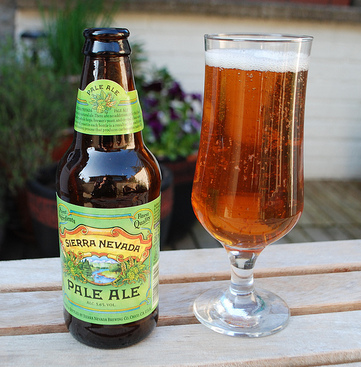Seawall Bar: Top-Rated Beach Bars in Galveston
Seawall Bar: Top-Rated Beach Bars in Galveston
Blog Article
Grasping the Craft of Distillation: a Deep Study Distillery Traditions
Exploring the intricate art of purification introduces a world soaked in classic traditions that have actually shaped the spirits we appreciate today. From the old beginnings of distillation strategies to the contemporary advancement of distillery devices, each action in the procedure carries with it an abundant tapestry of history and know-how. As we explore the delicate equilibrium of conventional versus modern-day distilling methods and uncover the value of essential active ingredients, a deeper understanding arises of the extensive effect distillery practices have on the spirits we relish.
Origins of Purification Methods
The growth of purification strategies has an abundant background that traces back to ancient human beings. The concept of dividing components based on their different boiling factors laid the structure for the sophisticated distillation procedures we have today.
The earliest proof of distillation go back to around 3000 BC in Mesopotamia, where clay pots were used to boil down fragrances and fragrant oils. The Egyptians better progressed these strategies, making use of purification for medicinal functions and embalming practices. The Greeks, especially numbers like Aristotle and Hippocrates, added to the theoretical understanding of distillation.
Over time, purification infect regions like India, China, and the Middle East, each society including its one-of-a-kind touch to the craft. The advancement of purification methods continued via the Center Ages and the Renaissance, ultimately resulting in the diverse selection of purification processes employed in modern-day distilleries worldwide.
Development of Distillery Equipment

With advancements in technology and a much deeper understanding of the purification procedure, contemporary distilleries now make use of a selection of advanced devices to create spirits of the best quality. Today, purification tools consists of column stills, reflux stills, and crossbreed stills, each developed to deal with details purification requirements. These modern stills use much better temperature regulation, raised purification precision, and better performance in separating alcohol from contaminations.
In enhancement to stills, distilleries currently utilize sophisticated condensers, fermenters, and filtering systems to more refine the extract. The development of distillery equipment remains to play a crucial function in shaping the diverse series of spirits available in the marketplace today.
Conventional Vs. Modern Distilling Practices
In analyzing distilling techniques, the contrast in between modern-day and conventional methods discloses significant innovations in effectiveness and top quality. Conventional distilling techniques commonly include time-honored techniques gave through generations, highlighting workmanship and artisanship (Galveston Whiskey). These approaches usually rely on copper pot stills and hands-on procedures that require a high level of ability and experience from the distillers. Alternatively, modern distilling methods utilize cutting-edge technology and technology to streamline production processes and boost uniformity. Automated systems, computerized controls, and cutting edge devices make it possible for modern-day distilleries to produce spirits more efficiently and with greater precision.
While traditional distilling techniques are cherished for their heritage and the special tastes they generate, contemporary techniques use benefits in terms of scalability, quality assurance, and sustainability. By integrating scientific advancements and modern design, distillers can maximize manufacturing, decrease waste, and meet the demands of today's market much more efficiently. Ultimately, the selection in between modern and conventional distilling methods usually depends on the distillery's goals, values, and target market.
Trick Active Ingredients in Purification Refine
Within the craft of purification, the selection of vital components plays a crucial function in establishing the taste account and top quality of the spirits created. The key active ingredients utilized in the distillation procedure are normally water, yeast, and a fermentable source such as grains, fruits, or sugarcane.
Water is a fundamental part as it not just waters down the alcohol content to a tasty level but likewise influences the general mouthfeel and texture of the spirit. The top quality and mineral material of the water made use of can dramatically affect the last product.
Yeast is one more essential active ingredient that converts the sugars existing in the fermentable resource into alcohol with the process of fermentation. Different pressures of yeast can produce differing aromas and tastes, adding to the distinct features of the spirit.

Effect of Distillery Traditions on Spirits
The influence of historical distillery customs on spirits expands beyond the selection of crucial ingredients, forming the extremely significance and character of the visite site last distilled products (Galveston Whiskey). These traditions, passed down via generations, play a critical function in specifying the distinct preference profiles and qualities that distinguish one spirit from another
Distillery practices encompass a vast array of methods, from the specific methods made use of in distillation to the option old procedures employed. The usage of traditional copper pot stills in scotch manufacturing is thought to impart specific tastes and features that are highly valued by connoisseurs. Likewise, the aging of spirits in oak barrels, a technique deeply rooted in distilling customs, adds to the development of intricate fragrances and flavors gradually.
/cdn.vox-cdn.com/uploads/chorus_image/image/69556938/305221803_513900044071408_5111142127981802908_n.7.jpg)
Final Thought
From the origins of distillation techniques to the modern practices, the impact of distillery traditions on spirits is undeniable. Distillery traditions play an important function in shaping the spirits industry and protecting the heritage of distillation practices.
Throughout the history of distillation, the equipment made use of in distilleries has actually undertaken substantial advancement to boost performance and high quality of the distillation process.With developments in technology and a deeper understanding of the purification procedure, contemporary distilleries now utilize a variety of innovative tools to create spirits of the greatest quality. Today, distillation devices includes column stills, reflux stills, and crossbreed stills, each developed to provide to certain distillation needs. From the origins of purification techniques to the modern-day practices, the influence of distillery customs on spirits is obvious. Distillery traditions play an essential duty in shaping click this site the spirits industry and preserving the heritage of purification practices.
Report this page